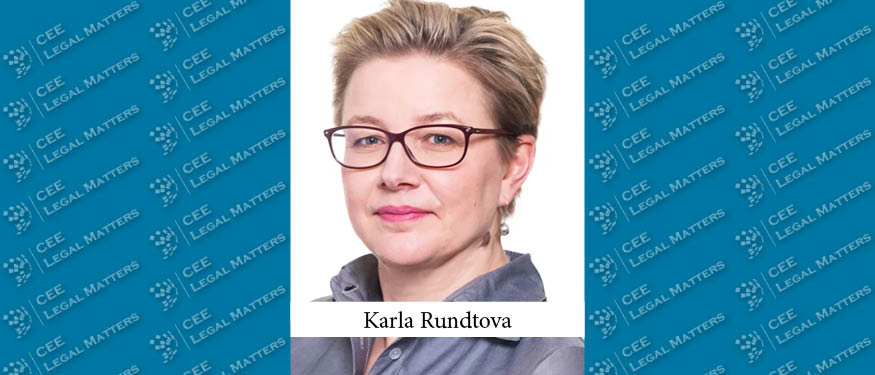As the country entered the 21st century, Ukraine’s Soviet-era judicial system was widely condemned as corrupt, incompetent, and inefficient. Committed to rectifying the situation, in 2015 the Ukrainian government introduced plans to reform the entire system. That transformation, which was the focus of an August 2017 CEE Legal Matters Round Table, continues today. We reached out to several of the Ukrainian dispute resolution specialists we spoke to several years ago for an update.
The Crisis in Context
The judicial system that existed before the current reform was, by all accounts, a disaster. A survey of Ukrainians conducted in 2009 by the Ukrainian Ministry of revealed that only ten percent of respondents trusted the national court system (that number dropped to 5% in a USAID report in 2015) and less than 30 percent believed that it was possible to receive a fair trial. In 2013, a Transparency International Global Corruption Barometer report revealed that 66% of the Ukrainian public considered the judiciary to be the most corrupt institution in the country, with a remarkable twenty-one percent of Ukrainians admitting that they had paid bribes to judicial officials themselves.
Thus, the formal proposal to bring Ukrainian legislation in line with European standards – initially developed in 2014 by a 43-member Judicial Reform Council and then approved by a decree of then-President Petro Poroshenko – was welcomed both by the public and legal professionals grown weary of endemic corruption, delay, and incompetence. A five-year timeline was established, scheduled to conclude in 2020.
First, in 2015, the Ukrainian Parliament (the “Verkhovna Rada”) adopted the “On Assuring the Right to a Fair Legal Proceeding,” law, which clarified and bolstered the guarantees of judges’ independence and immunity, better delineated their responsibilities, made their appointments more transparent, among other things.
In June 2016, the Parliament took three major steps: First, it approved amendments to the Constitution of Ukraine that removed political influence on and raised requirements and professional standards for judges and abolished absolute immunity. Second, it adopted a new “On the Judiciary and Status of Judges” law, which removed political influence in the selection of judges, established a duty by judges to submit a declaration of family ties and a declaration of integrity, and created a new Public Integrity Council, as well as providing for the establishment of a High Anti-Corruption Court and High Court for Intellectual Property. Finally, it adopted the “On Enforcement Proceedings and On Agencies” and the “Persons Authorized to Enforce Court Orders and Writs of Execution of Other Institutions” laws, which modernized the State Enforcement Service and introduced the concept of private executors.
In December of 2016 the Parliament adopted the “On the High Council of Justice” law, setting the status, scope of authority, principles of organization, and transparent operational procedures of a new body of judicial governance. The High Council of Justice is tasked with ensuring the independence of the judicial branch of government and its accountability to society, as it is responsible for judges’ appointments and dismissals as well as dealing with instances of misconduct on the part of judges and prosecutors.
The next summer saw the adoption of the “On the Constitutional Court of Ukraine” law, which determined the principles of organization and operations of the Constitutional Court of Ukraine, the status of the justices of the Court, the grounds and procedure for submitting a matter for review by the Court, and the procedure for hearing a matter and for executing the Court’s decisions, as well as providing a right to a constitutional complaint for individuals who believe that the law applied in a final court decision involving them runs counter to the Constitution.
In October 2017, the Parliament adopted a bill amending Ukraine’s Codes of Commercial Procedure, Civil Procedure, and Administrative Procedure, which the Judicial Reform Council described as “the most comprehensive overhaul of procedural law Ukraine has seen in the past 26 years.” According to the Council, the rules with respect to legal proceedings “have been brought in line with global best practices.”
Finally, in June 2018, Parliament adopted the “On the High Anti-Corruption Court” law, setting the principles of organization and operations of the High Anti-Corruption Court and laying out the requirements for judges serving on the court.
At a macro level, as a result of these new laws and Constitutional amendments, the court system was restructured from a four to a three-tiered system, with three levels of courts of general jurisdiction including a Supreme Court, as well as a Constitutional Court and a High Anti-Corruption Court.
The results, while not perhaps as overwhelmingly positive as initially hoped, are nonetheless compelling. Among other things, for the first time in Ukraine’s history, a female judge – Justice Valentyna Danishevska – was appointed to head the Supreme Court, and 53 of the 118 judges appointed to the Supreme Court are women.
In addition, while some criticisms were leveled at the reappointment of a high number of judges from the previous regime to the current Supreme Court, the selection process for the High Anti-Corruption Process was conducted more rigorously, as the Public Council of International Experts which oversaw the process was empowered to ban candidates initially identified lacking a sufficient level of proficiency and integrity. Of the 49 so identified, some 42 were permanently expelled.
A Cause for Optimism
In general, everyone seems pleased with the progress so far.
Avellum Partner Vadim Medvedev, for one, says that the quality of the Supreme Court’s rulings has significantly increased. “The court’s judgments and reasoning are far better than what we used to see five years ago, and it gives a lot of comfort that matters are actually properly considered in the highest court of Ukraine.”
DLA Partner Olga Vorozhbyt says that, while the new Supreme Court and new Procedural Codes have not changed the system at its roots, the appointment of new judges, “was enough to create a different culture in the Supreme Court and it demonstrates that even a handful of new people in the system can change it a lot.”
Indeed, the new procedural rules are frequently cited as among the most positive elements of the reform. The rules – which came into effect on December 15, 2017, the same day the new Supreme Court opened its doors – limit judicial discretion, shift the focus of proceedings from courts onto parties, change the procedures for labor disputes and disputes related to corporate officers, and increase domestic support of international arbitration. They also introduced an e-court, providing online access to court services in some locations.
“With the relatively new procedural rules, the overall consideration of cases became more efficient, deadlines for consideration of commercial cases are mostly met, and judges are more prepared for hearings,” reports CMS Counsel Olga Shenk. And she believes that, once the e-court system is completely implemented, both submitting documents and evidence and communicating with the courts will become easier and more efficient.
Although Integrites Counsel Serhii Uvarov reports that many courts remain unprepared to deal effectively with what he describes as the “guerilla tactics” still practiced by many parties, the new Procedural Code are an innovative and efficient tool for case management. “Although it took some time for judges to become familiar with it and there is still a need for some time to test it,” he says, “it does work to a certain extent.”
Medvedev is on board as well. “The legislative framework and the rules of procedure are quite successful,” he says. “If we do bona fide litigation, the rules of procedure favor us much better than they did before.”
Every Silver Lining Has a Dark Cloud
Although most dispute resolution specialists in Ukraine approve of the overall commitment to and process of the reform, expressions of skepticism about the results and/or disappointment with the speed of the process are not uncommon.
There is some frustration with the selection process for justices for the new Supreme Court, which many believe was not kept fully transparent by the High Qualification Commission of Judges. The Public Integrity Council – consisting of local civic activists, attorneys, and journalists – was established to assist the HQCJ in evaluating professional ethics and integrity criteria during the assessment, but many believe that the HQCJ and the High Council of Justice ignored the PIC’s recommendations. As a result, many feel, judges who had been accused of fraud were allowed to bypass the supposedly-mandatory qualification criteria and stay on the court.
That feeling seems to be well-founded. According to the joint April 2019 report by the Chesno campaign and the DEJURE foundation, although almost 40% of the 2409 Ukrainian judges participating in the selection process faced allegations of corruption, only 15 of them were dismissed from consideration.
And there are accusations that the government continues to influence the courts improperly as well. Redcliffe Partners Partner Sergiy Gryshko, speaking about the Administrative Court of Cassation, says that “the quality of decision-making has been far from perfect and the court proved itself unable to withstand the government pressure and remain neutral. This is a disappointment, because without a strong Administrative Court of Cassation – the court which ensures the proper government is in place and protects individual rights – there is no rule of law.”
And while the appointments in the Supreme Court and the High Anti-Corruption Court involved some scrutiny, less attention was paid to lower courts, where judges were required only to participate in an attestation process to remain at their positions. Unsurprisingly, many are unhappy with the status of reform at the lower court level. Olga Vorozhbyt says, “I still see a low degree of knowledge and culture in the courts, and judges are often not impartial.”
Integrites Counsel Serhii Uvarov agrees. Although he’s quick to note that going to court in Ukraine is no longer a “hopeless exercise,” he notes that “there is still a great lack of confidence in the lower courts,” and he admits that his firm continues to warn its clients about the risks of unexpected and unwarranted decisions and encourages them to have a back-up plan in place, ideally in other jurisdictions.
And the unavoidable delay in having cases heard which plagued the Ukrainian courts for so long has not completely disappeared either, CMS Counsel Olga Shenk reports, with obvious frustration. “The delay in consideration of cases is huge,” she says. “We have cases that have been pending with the Supreme Court for at least two years already … and they are simple tax disputes.”
Tempus Narrabo
A thorough reform of a system so associated with corruption and inefficiency does not happen overnight, but there is general agreement that the process is moving in the right direction. Vadim Medvedev insists that even the problems with the lower courts will, over time, be resolved. “The system gradually improves by the movement down of higher requirements from within,” he says. “From the Supreme Court to lower courts.”
Sergei Gryshko is simultaneously hopeful and cautionary. “This is the best Ukraine has had,” he says with a smile. “But it can be improved and in my view it must be improved.”
The stakes, needless to say, are huge. “The importance of the judicial reform can hardly be overestimated,” says Olga Vorozhbyt. “For foreign investors, the importance of a fair and effective trial prevails over the risks of war and other obstacles.”
This Article was originally published in Issue 6.8 of the CEE Legal Matters Magazine. If you would like to receive a hard copy of the magazine, you can subscribe here.

















